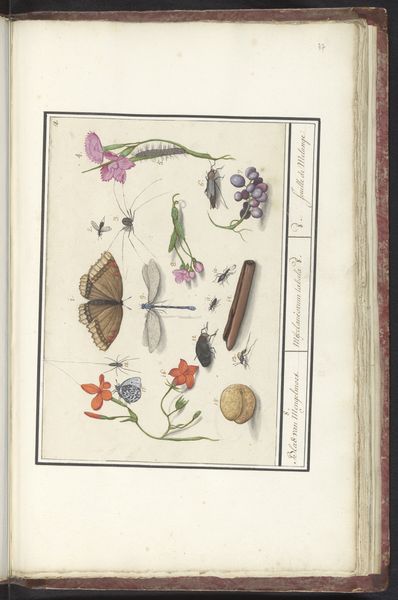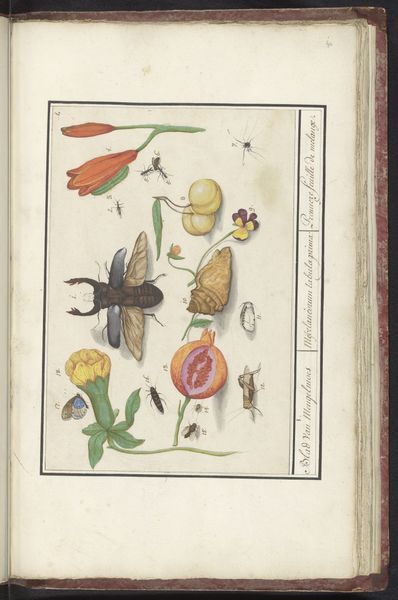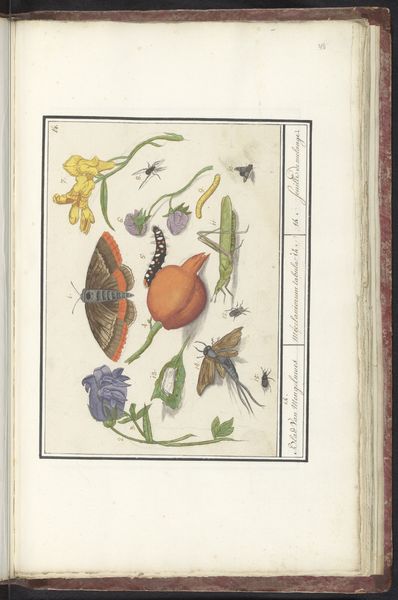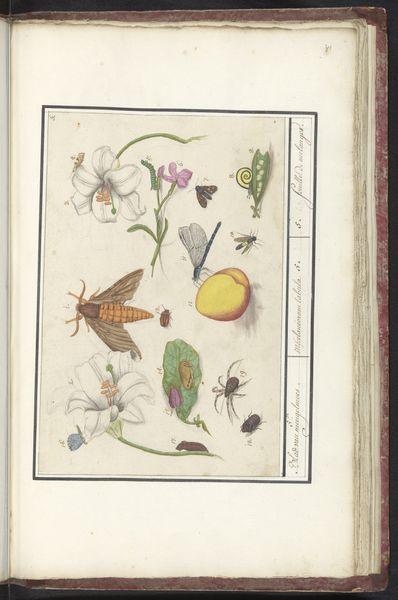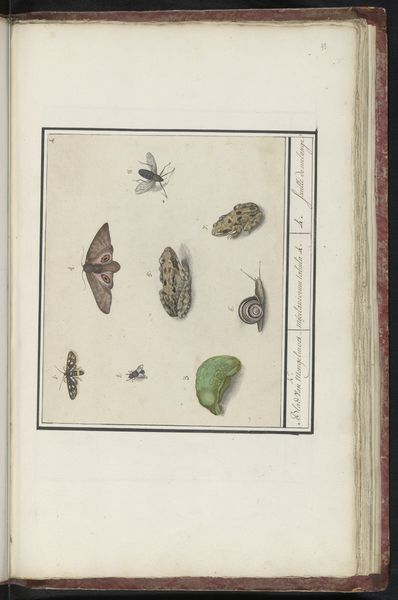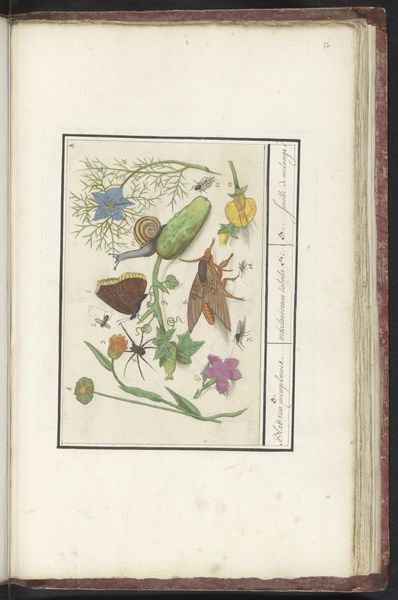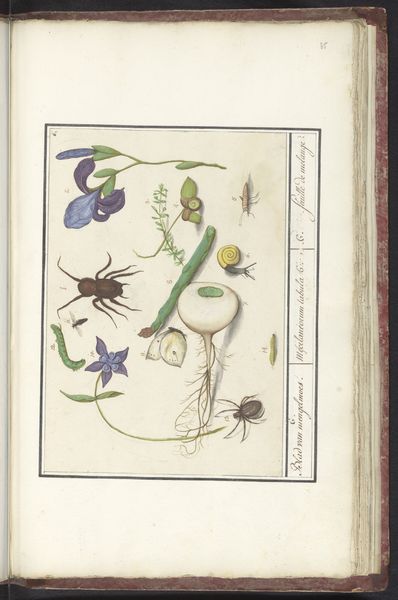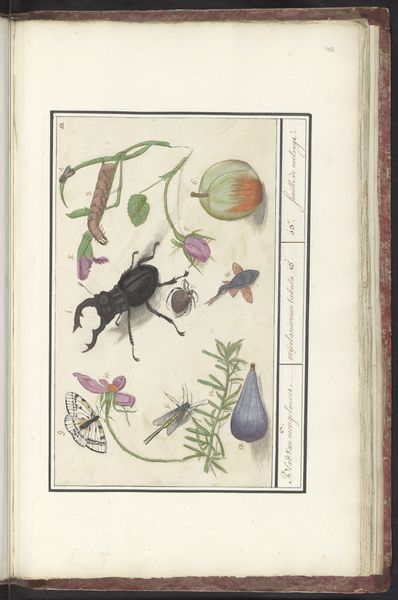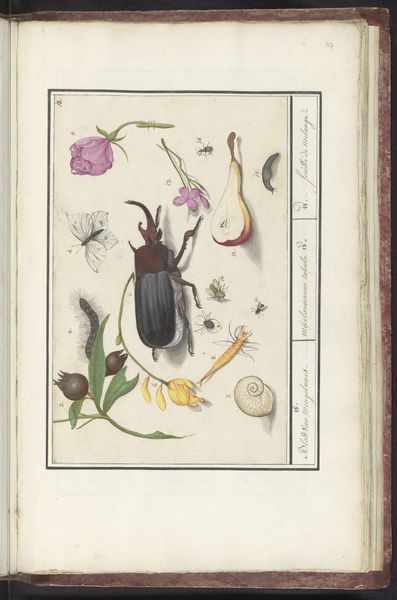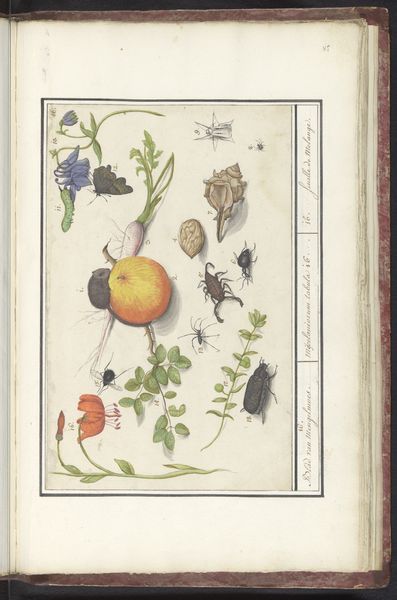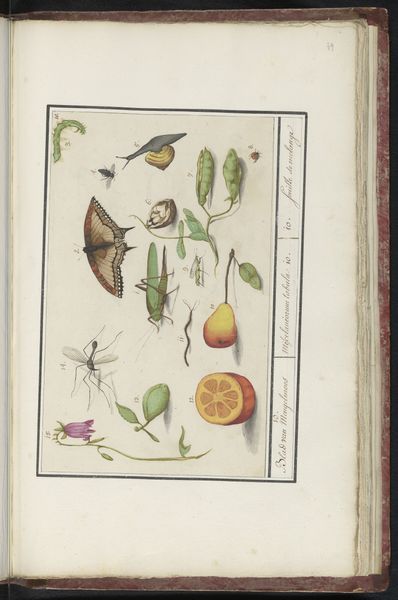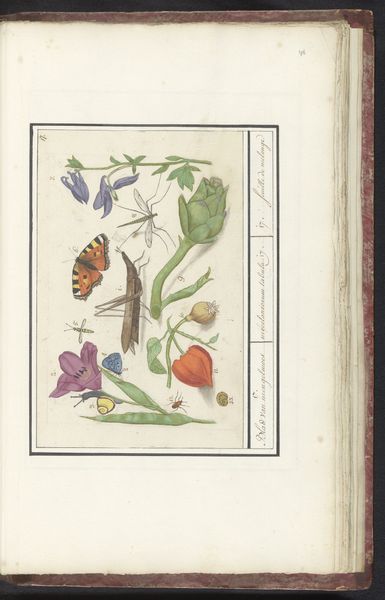
drawing, coloured-pencil, tempera, paper, pen
#
drawing
#
coloured-pencil
#
tempera
#
paper
#
11_renaissance
#
coloured pencil
#
pen
#
northern-renaissance
#
naturalism
Dimensions: height 161 mm, width 268 mm
Copyright: Rijks Museum: Open Domain
Curator: Here we have "Natuurhistorische ensemble (nr. 11)" by Elias Verhulst, created sometime between 1596 and 1610. It's a meticulously rendered drawing using pen, colored pencil, and tempera on paper. Editor: Immediately, I'm struck by its stillness. A captured moment from nature, arranged with incredible care. It’s almost dreamlike, despite its objective appearance. Curator: Observe how Verhulst balances a naturalist approach with deliberate compositional choices. Each specimen is isolated, yet the page remains unified through the precise arrangement and numbered key, suggesting scientific study. Editor: The use of vibrant colors—the poppy's fiery orange against the cornflower's gentle blue—creates a compelling contrast. These colors might represent vitality, poised against the background of decaying organic matter; perhaps the seeds suggest potential, while other aspects point towards inevitable decay. Curator: Precisely. Semiotically, consider the implications of clustering insects and flora on the same page. There seems to be the clear pursuit of scientific rationalism; however, it may not have occurred to the artist that simply collating these visual representations may invoke deeper subconscious narratives in viewers like ourselves. Editor: Absolutely, these insects might stand for smaller, hidden concerns. The plants with their flowering petals evoke a brief moment in an ongoing narrative of organic life. Note how it evokes "vanitas"— a very contemporary fascination with symbolism during the Northern Renaissance. Curator: But beyond potential symbolist interpretations, the artist skillfully employs varied textures to render three-dimensionality. The soft down on the butterfly wing is distinct from the hard chitin of the beetle. He emphasizes volume using shadowing—which invites careful formal appreciation of lines, tones, colours, forms, and spatial arrangement within the bordered pictorial space. Editor: The ensemble becomes more than a mere visual inventory. It feels emotionally potent – not simply an illustration, but a visual poem capturing the beauty and transience of the natural world. It whispers tales of the ephemeral nature of existence. Curator: Ultimately, its charm rests upon Verhulst's synthesis of observational accuracy and artistic formalism. This is where science meets art. Editor: Yes, and through its exquisite detailing and evocative composition, we are transported back to an era fascinated by both scientific inquiry and allegorical possibilities.
Comments
No comments
Be the first to comment and join the conversation on the ultimate creative platform.
